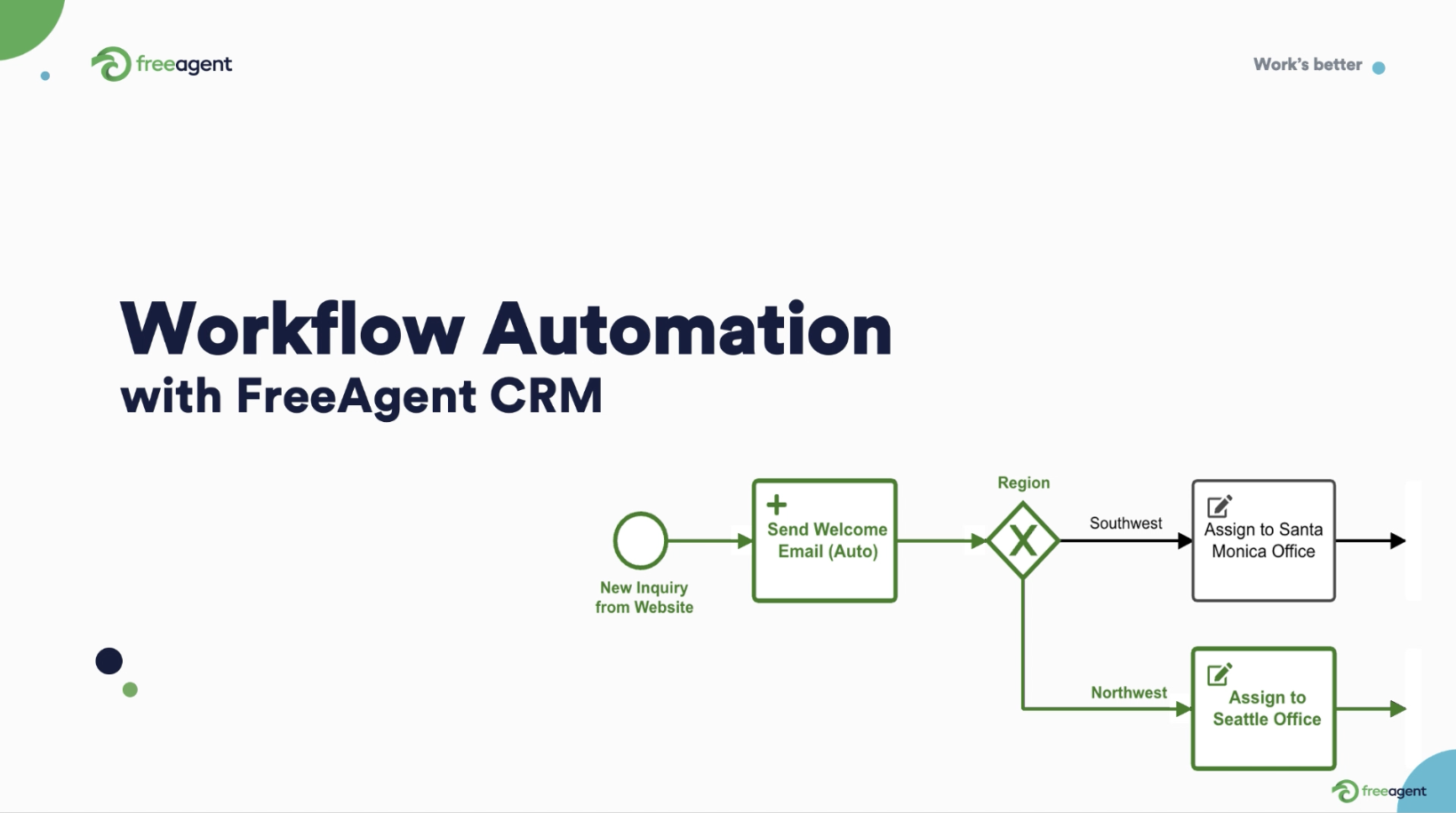Few companies have the resources (or foresight) to invest much into project management.
Those that do often employ a software tool to help, training their staff on the basics of updating their progress in the tool and little beyond that.
Clear and established processes for how to manage a project are left up to team leaders or individuals, with personal preference and taste dictating the guidelines.
This can lead to miscommunications, less successful outcomes, and needless stress for everyone involved.
Yet, the establishment of an effective work management process doesn’t require a lot of time or money. It requires only planning and consistency.
In this guide, we will show you how to create a project management plan that sets you and your team up for success.
What is project management?
Project management is the organization of the different tasks and components of a project.
It can be as simple as a single deliverable with a deadline attached or as complicated as a product launch for a new smartphone.
Why is project management important?
Ultimately, project management can mean the difference between the success and failure of a project.
This is best understood by looking at the effects of project management on the following areas:
- Alignment: For a project to be successful, everyone must be on the same page. A well-managed project has clearly established goals where everyone working on the project understands how their tasks contribute to the whole.
Likewise, timelines are clearly defined, responsibilities plainly laid out, and expectations clearly set.
- Communication: For a project to run smoothly, communication is essential. Good communication comes down to more than just messaging — it’s about the timing and delivery of your message.
For example, if you have a large project with a long task list, simply presenting the task list to your team can overwhelm and distract them. If instead, you roll out the tasks over time, you can control the flow of work for your team and for yourself.
- Collaboration: Very few projects are tackled solo. Even small projects require oversight and large projects can require the contributions of multiple departments.
How well everyone works together will go a long way to determining the overall success of a project.
Considering ahead of time how a project will move through different teams and phases can ensure smooth handoffs and prevent bottlenecks and delays.

Lay the foundation
Good project management begins before a project even starts. For many of us, this is the challenge.
Knowing where and how to begin is not always obvious and it can be overwhelming to look at a project from a bird’s eye view.
The trick is to stay focused, take it one day at a time, and gain as much clarity as you can about the project early on. To start, you will need to:
- Determine the project’s goals: What are the ultimate goals of the project and how will success be measured? Goal alignment is crucial.
If the project involves different leaders and teams, everyone needs to understand the project’s goals and their role in achieving those goals.
- Create a project task list: Begin by breaking the project up into phases. To do this, list all the deliverables required to bring the project to completion.
Each of these deliverables could be a phase, or several compatible deliverables could make a phase.
After you have your phases outlined, break each phase up into the tasks required to complete the deliverables.
With your phases and tasks now laid out, try to identify milestones that can be used to mark progress.
- Set a rough timeline: To create your timeline, begin by calculating the time it will take to complete each phase.
Get input from team leaders and members and account for approval/review time, holidays, PTOs, and similar factors.
Once you know the timeline for each phase, you can start calculating the time it will take to complete your milestones.
For simultaneous, independent milestones, the milestone duration is pegged to the time it takes to complete the longest phase.
For milestones with dependencies, add the lengths of these phases together, subtracting the time when work can be done simultaneously.
- Create the estimated budget: When calculating your project budget, you need to account for:
- Labor costs- Staff hours, consulting costs (lawyers, accountants, marketing agencies)
- Material costs: Equipment, supplies, software tools, licenses
- Preparatory costs: Training, research
It is easiest to first calculate the budget for each project phase, then add the phases together to get your total budget.
- Have a leadership review: With your timeline, task list, and budget in hand, it is time for a leadership review.
You want to do this before starting the project to ensure align everyone on the plan before committing any time and resources.
- Finalize the plan: After the leadership review, revise the plan according to the feedback provided. You are now ready to start the project.

Get started
Whether starting the first phase of the project or the last, the steps are the same.
- Create task briefs: At a minimum, this should include a task description, start date, and deadline.
You could also include example materials, a resource list, or anything else you think might help.
- Gather resources: Everything a team member(s) needs to complete a task should be provided upfront to prevent delays.
This could be equipment such as a laptop, a shared list of links to required resources, an account setup guide for software applications, access to tools, etc.
- Delegate tasks: The person overseeing the task assigns it. Consider the pace of your task rollout carefully.
Assigning too many tasks at once can overwhelm your team and disrupt focus.

Monitor progress
Perhaps the most important (and challenging) aspect of good project management is monitoring the project day by day.
- Create a daily recurring tasks list for yourself: A checklist you can run through daily will help ensure nothing is missed.
This list can be as simple as a reminder to check product statuses every morning and respond to messages every afternoon, but it will likely be much more detailed than that.
At the end of each day, look at your checklist and see if there are any tasks to add for the next day in addition to your daily recurring tasks.
Perhaps you need to schedule a time to touch base with a teammate or send someone the resources they requested.
Preparing like this the day before can help you get a head start on the day ahead and allow you to rest easier at night.
- Weekly project status review: At the end of each week (or appropriate period), set aside some time to review the project thoroughly.
Assess the progress of the project as well as the execution. Ask yourself:
- Is the project running on time?
- Is the quality of the completed tasks up to standard?
- Does everyone have what they need to move forward with their tasks?
- Are there common challenges that keep coming up?
After your review, look ahead to the upcoming week and prepare accordingly.
- Alter the task rollout to stay on schedule
- Create briefs for new/upcoming tasks
- Gather the resources that will be needed for the week ahead
- Create a plan to address common challenges

- Set and prepare for meetings every Monday: When managing a project, you cannot afford to have a meeting wasted through a lack of preparation or focus. Every meeting should have a purpose and a clearly defined agenda.
Every Monday (or the start of your work week), prepare for the meetings you have that week and set meetings for the week after.
Create an agenda for each meeting and send it to the attendees the day before.
When sending meeting invites, name the meeting appropriately so everyone involved can tell what the meeting is about just by looking at their calendar.
- Prioritize review time to keep the ball rolling: The biggest delays in any project come from waiting for task reviews and approvals. This must be given priority by the leadership team.
Set this expectation early, during the leadership review, before the project has even been started. This will set the groundwork for the gentle nudges and reminders you will send later (if required).
Wrap up
The project may be finished, but your work is not. You will need to:
- Calculate the final budget total: You have already done the groundwork for this when you created the estimated budget. Now you just need to gather all the receipts, time logs, and expense reports and plug the real numbers in.
- Analyze success: Evaluate the success of the project against its goals. Ask yourself:
- Did we accomplish our project goals?
- Did we stay on schedule?
- Did we stay on budget?
- Gather feedback: Ask your team for feedback about the project. Anonymous surveys are ideal for this as you want to gather feedback that is honest and unfiltered. The questions you ask will vary by project, but some common examples include:
- What do you think the leadership team could have done better?
- What do you think you could have done better?
- Were your tasks and responsibilities made clear?
- Did you have the resources you needed to complete your tasks?
- Did you have enough time to complete your tasks?
- Leadership debrief: With the final budget calculated, the results measured, and the feedback gathered, it is time for a leadership debrief.
This is a great opportunity to share your thoughts about the project, detail any obstacles you faced, and celebrate the accomplishments of the team.
- Review your project for future improvements: After some time has passed and your head has cleared, it is time to look back at the project and evaluate how you did.
This isn’t a success review per se — it is a deep dive into the process to find improvement opportunities.

Organize your projects
A project plan is only as good as it is organized. The following best practices can make any project easier to manage.
- Create a labeling system for your docs and resources: A consistent labeling system allows everybody to find what they need quickly and easily. It also provides guidance for people to label their own work, ensuring nothing gets lost in the shuffle.
Adding the project name to the beginning of each document or resource is an example of a simple labeling system that makes searching easier.
Whatever system you come up with, make sure it is communicated to the whole team before the project begins.
- Email folders: You should already be organizing your emails into folders, but when managing a project, this becomes essential.
A single folder with the project’s name is enough to manage communication for a small project.
For larger projects, you may want a separate folder for each department or phase.
- Setup project communication channels: Remote communication has come a long way in the past few years and you can use that to your advantage.
A chat channel like Slack, dedicated to the project, is a great way to keep communication lines open.
You can pin resources, share documents, post updates, and celebrate wins within these channels, making them a far superior option to unending email chains.

Set yourself up for success
The following tips and tricks can help make your project management efforts more successful.
- Keep a project notebook: A project notebook is an invaluable tool for a project manager.
Writing things down solidifies them in your mind and when you are in a meeting or on a call, writing things down is often easier than jumping between tabs and screens.
- Regular progress meetings: A weekly check-in with your team leads helps avoid setbacks and delays.
- Give a “secret cushion”: Expect the unexpected, as they say. When creating your timeline, leave a cushion for your deadlines that allows for a hiccup or two.
The amount of cushion will depend on the length of the project and the size of the task. Keep this cushion a secret, or it will suddenly become the deadline.
- Celebrate small wins to boost morale: Projects can be arduous and daunting endeavors, so be sure to celebrate the small victories along the way.
For example, moving from one phase to another is a great time to celebrate and thank everyone who helped.
- Think about the “future you”: While no two projects are exactly the same, a lot of the resources you create can be used in future projects. With this in mind, templatize what you can and archive, never delete.
- Write an agenda for every meeting: We mentioned this already, but it cannot be overstated; Have an agenda for every meeting.
- Respond/take action as soon as you can: Move that email into your project folder as soon as you get it. Submit that invoice as soon as you receive the receipt.
Obviously, not everything can be done in the moment, but the more you act immediately, the less things build up — including stress.

Madison Helton is a Marketing Operations Manager at FreeAgent CRM. She has been managing teams for more than a decade and has experience with project launches, recall programs, event management, and more.
When not helping FreeAgent look their best at events around the US, she can be found choreographing and performing routines with her Latin dance group, hiking in the rocky mountains, or playing at the park with her dog Aria.
Connect with Madison on LinkedIn.






